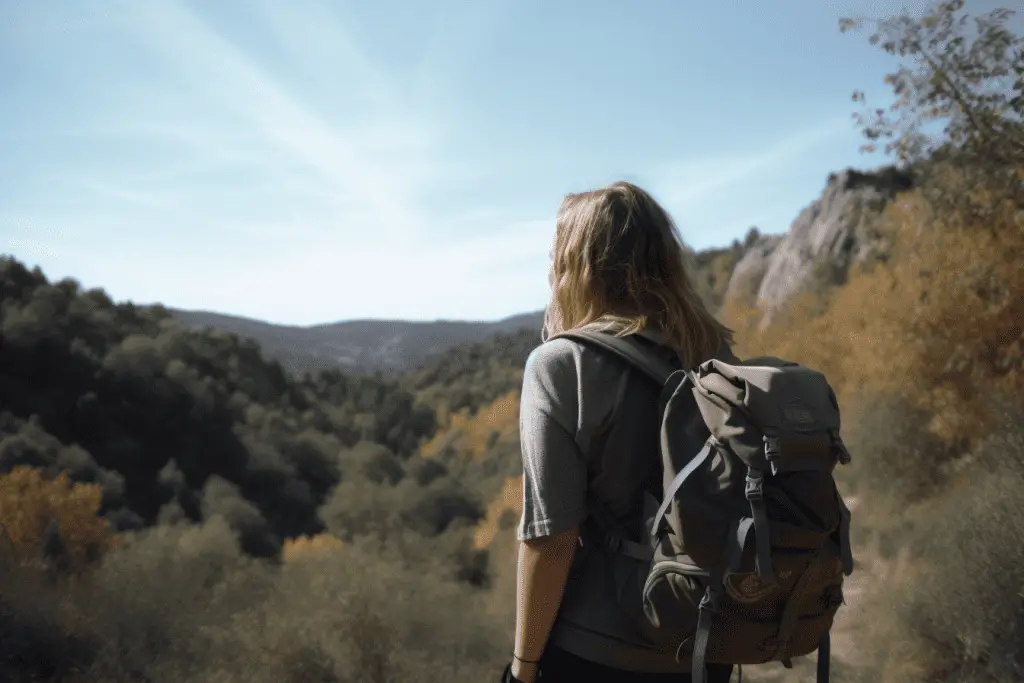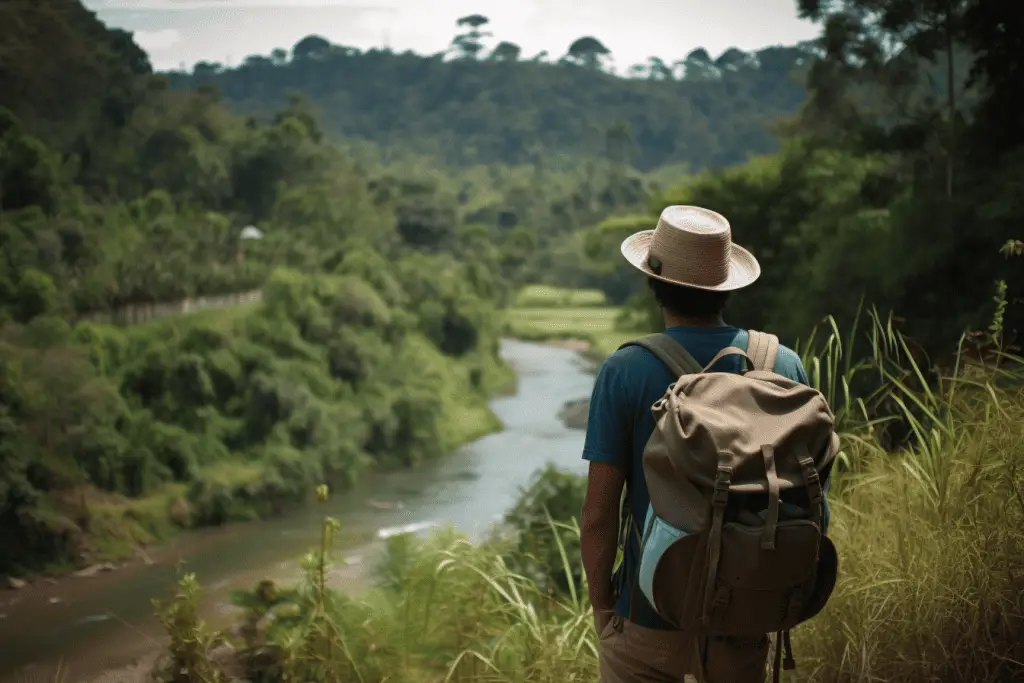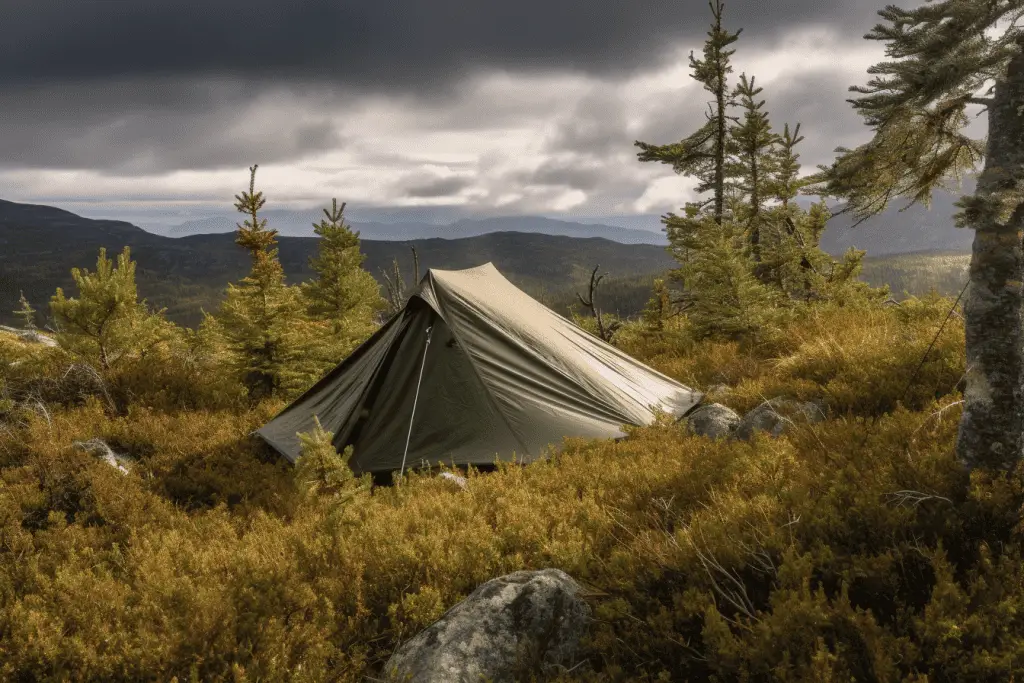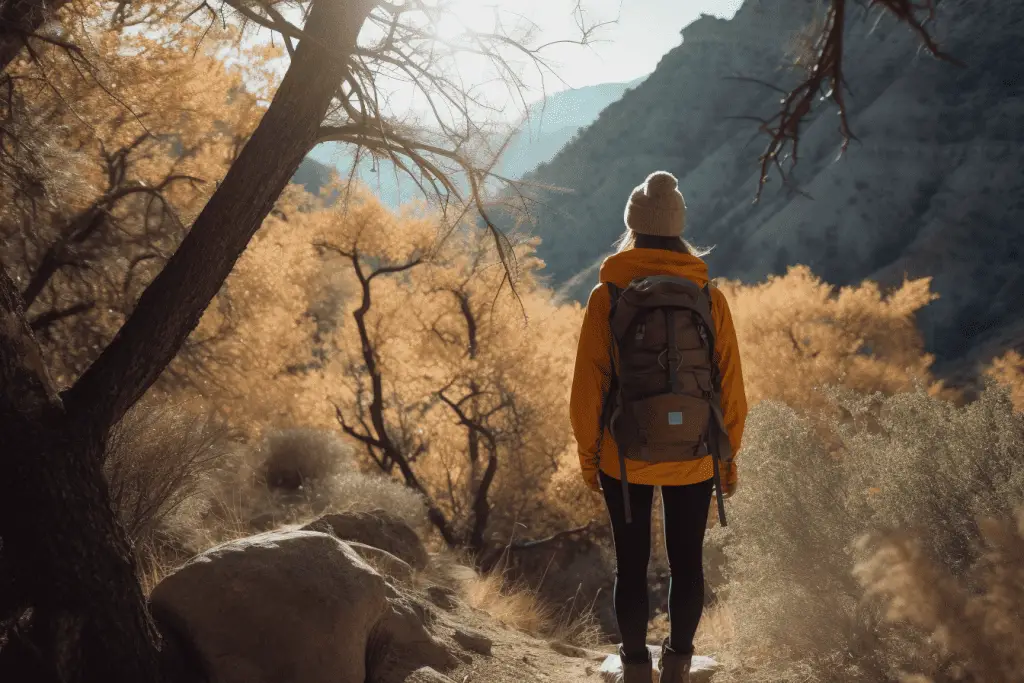Dreaming of taking on the Appalachian Trail but daunted by the prospect of the entire 2,200 miles? Don’t worry, we’ll teach you how to section hike the Appalachian trail so you don’t have to do it all at once. This strategy allows you to break down the majestic Appalachian Trail into more manageable parts, enabling you to hike the trail in sections over time. Each piece you complete brings you a step closer to hiking the entire trail, and the beauty of it is that you can do it at your own pace, based on your own schedule and ability.

Understanding the Concept of Section Hiking
So, what exactly is section hiking? Well, picture this: instead of trekking the entire 2,200 miles of the Appalachian Trail in one go, you chop it up into bite-sized pieces. You take on a segment—anywhere from a few miles to a few hundred miles—complete it, and then come back another time to do the next one. That’s section hiking in a nutshell!
It’s like reading a really long, captivating book. You wouldn’t try to read it in one sitting, right? You’d pick it up and put it down, diving back into the story whenever you can. Similarly, section hiking lets you experience the Appalachian Trail chapter by chapter, at a pace that suits you.
Why is section hiking such a great idea? It’s all about flexibility and accessibility. You don’t have to quit your job or put your life on hold. You can tackle a section during a weekend, on a vacation, or whenever you manage to carve out some time. It’s also perfect for those new to hiking or those who prefer a slower pace. Plus, every section you complete gives you a sense of accomplishment, a completed piece of the bigger Appalachian Trail puzzle.
So, if you love the idea of hiking the Appalachian Trail, but can’t commit to the whole thing at once, consider section hiking. It’s your journey, and you get to decide how to undertake it!
Choosing the Right Section of the Appalachian Trail for You
Choosing the right section of the Appalachian Trail (AT) is like picking your favorite ice cream flavor – there’s no one-size-fits-all answer because it depends on your personal tastes and abilities. But don’t worry, there’s a slice of the AT that’s perfect for you. Let’s dig into how you can find it!
The Appalachian Trail stretches from Georgia to Maine and everything in between offers a unique experience. You might be drawn to the rugged peaks of New Hampshire’s White Mountains, the rolling hills of Virginia’s Shenandoah Valley, or the wild forests of North Carolina and Tennessee. To start, consider what kind of scenery motivates you and excites your spirit of adventure.
Think about your hiking ability and experience. If you’re a beginner, you might opt for a relatively flat and less demanding section like Maryland. If you’re looking for a challenge, consider the steep climbs and descents of the trail in New Hampshire and Maine.

Seasons also play a role. Some sections are best hiked at certain times of the year. For instance, the southern sections are best in spring and fall, while the northern sections shine in the summer. Make sure to research the best time to hike the section you’re considering.
Proximity is another factor. If you live near the AT, you might want to start with a section close to home. This could make logistics easier and allow for more frequent trips.
Lastly, take a look at the availability of services along the way. Some sections have frequent access to towns for resupplying food and gear, while others are more remote.
In the end, the “right” section is the one that matches your skills, preferences, and logistics. Don’t be afraid to start small and work your way up, or jump right into a more challenging section if you’re ready. The Appalachian Trail is all about the journey, so choose a section that will make your journey enjoyable!
Planning Your Trip: Considerations and Preparations
Planning your section hike on the Appalachian Trail is like setting up a road trip, only your road is a forest path and your vehicle is your own two legs. Let’s talk about what to consider and how to prepare!
First things first, once you’ve chosen your section, figure out the distance and estimate how many days you’ll need to cover it. The average hiker covers about 10 to 15 miles a day on the AT, but don’t forget to account for the terrain’s difficulty and your fitness level. It’s okay to start slow!
Next up is the research phase. Try to get ahold of a detailed map or guidebook for your chosen section. This will help you understand the trail better, including the terrain, water sources, shelter locations, and potential resupply points. The Appalachian Trail Conservancy’s website and local hiking forums are also great resources.

Planning your daily mileage is crucial too. It’s not just about how far you can hike in a day, but where you’ll end up. Try to plan your days to end at a shelter or established campsite, but also be aware of the rules around camping in the area you’re hiking.
Decide on your resupply strategy. Depending on the length of your section, you might need to resupply food and other consumables. Some hikers prefer to pack everything from the start, while others resupply along the trail. Choose what works best for you.
It’s also important to notify someone about your plans. Provide them with a copy of your itinerary and check in with them regularly.
And last but definitely not least, prepare yourself physically. Training is a key aspect of your preparations and can make the difference between an enjoyable hike and a painful one. Start training a few months before your trip to get in trail-ready shape.
Remember, a well-planned trip is often a well-executed trip. Take the time to map out your journey, and you’ll be setting yourself up for a great Appalachian Trail adventure!
How to Schedule and Pace Your Hike
Setting your schedule and pace for your section hike is a bit like choreographing a dance. You’ve got to find the rhythm that works for you and align it with the music— in this case, the trail. So let’s get into the groove!
When it comes to scheduling, consider the total distance of your section and divide it by the number of miles you think you can comfortably cover in a day. Keep in mind the terrain, your fitness level, and the fact that you’ll be carrying a pack. As we mentioned earlier, most hikers manage about 10 to 15 miles a day on the Appalachian Trail. But remember, it’s not a race. It’s perfectly fine to take it slow, especially if you’re just starting out or if you want to soak in the views and experiences.
In terms of pacing during the day, consider the “bookends” approach. This means hiking a few hours in the morning, taking a longer break during the heat of the day, and then hiking a few more hours in the evening. This approach not only helps avoid the hottest part of the day but also aligns your hiking with the cooler, often more enjoyable times to be on the trail.
Be sure to schedule rest days too, especially for longer sections. These “zero days” are a chance to rest your body, resupply, do laundry, or just enjoy a town day.
Remember, your schedule and pace should be a guide, not a strict rule. Listen to your body. If you need to slow down or take an unplanned rest day, do it. The beauty of section hiking is the flexibility it offers. You’re out there to enjoy yourself, not set a speed record.
So get out your calendar, lace up those hiking boots, and start finding your rhythm for the trail!
Training for Your Appalachian Trail Section Hike
Training for your section hike on the Appalachian Trail is a lot like training for a marathon – only your finish line is a breathtaking mountaintop or a serene woodland view, not a cheering crowd. But hey, squirrels can be quite supportive too! Let’s talk about how to get trail-ready.
Physical training is a key part of preparing for your hike. Start a regular exercise regimen several months before your trip. Focus on cardio, strength, and flexibility. Running, cycling, or swimming can help build your endurance, while weightlifting, especially for your legs and core, can prepare your body for the rigors of the trail. Yoga or Pilates can enhance your balance and flexibility, reducing your risk of injury.

Of course, the best training for hiking is… you guessed it, hiking! Try to spend as much time as possible hiking, preferably on varied terrain and with a loaded backpack. This will not only improve your fitness but also help you break in your boots, test your gear, and get a feel for what pace is comfortable for you.
Training should also include preparing for the mental challenges of the trail. Practice hiking alone if you’ll be solo, or with your group if you won’t. Learn basic navigation skills and familiarize yourself with the map of your section. And remember, part of the challenge is endurance, not speed.
Don’t forget about nutrition. Start making healthier food choices to fuel your body for both training and the hike itself. Stay hydrated and consider taking multivitamins to make sure you’re getting all the nutrients you need.
Finally, make sure you have proper rest and recovery days in your training schedule. Overtraining can lead to injuries, which can throw a wrench in your hiking plans. Listen to your body and give it time to rest and repair.
Remember, every step you take in training is a step towards a successful and enjoyable section hike.
Necessary Gear and Equipment for Section Hiking The AT
When you’re section hiking the Appalachian Trail, your gear is like your trusted sidekick—it’s there to support you, keep you safe, and make your life easier. So let’s dive into the essentials you’ll want to bring along!
First off, you’ll need a good backpack. Choose one that’s durable, fits well, and has enough capacity for your gear and food. Remember, comfort is key—you’re going to be spending a lot of time together!
A high-quality tent or hammock is crucial for a good night’s sleep on the trail. Check the weight, durability, and ease of setup. You’ll also need a sleeping bag suited to the expected nighttime temperatures and a sleeping pad for insulation and comfort.
Now, let’s talk about clothing. Stick to the ‘layering’ principle. Pack lightweight, moisture-wicking base layers, insulating mid-layers, and a waterproof outer layer. Don’t forget a good pair of hiking boots or shoes, a hat, and gloves. And remember, cotton is a no-no—it absorbs moisture and takes forever to dry.

Your kitchen set-up can be simple: a small stove, a pot, a spoon, and a lightweight, reusable water bottle. A water filter or purification tablets are also crucial—the trail may have water sources, but they’re not always safe to drink from directly.
Other essentials include a map and compass for navigation (yes, even in this digital age), a first-aid kit, a headlamp or flashlight, and a multi-tool. Don’t forget essentials like toilet paper, a toothbrush, and toothpaste.
Consider bringing trekking poles to help with balance and reduce stress on your knees, especially on those tricky descents.
And of course, pack out what you pack in—carry trash bags to leave no trace.
One last piece of advice—once you’ve gathered all your gear, do a few test hikes. This helps ensure you’ve got what you need, and nothing you don’t. Remember, every ounce counts on the trail!
Logistics: Transportation to and from the Trail
Figuring out transportation for your section hike on the Appalachian Trail can feel a bit like solving a puzzle. You need to get yourself to the start, from the finish, and sometimes, back to the start again! So, let’s work through some of those logistics.
Firstly, decide if you’ll be hiking point-to-point or doing an out-and-back hike. Point-to-point means you start at one spot, end at another, and need transportation at both ends. An out-and-back means you start and end at the same place, which simplifies logistics but also means you’ll be retracing your steps.
If you’re hiking point-to-point, one option is to leave your car at the end point and get a shuttle to your starting point. That way, when you finish, your car is waiting for you. There are many shuttle services along the AT run by locals or fellow hikers. Check out the Appalachian Trail Conservancy’s shuttle list for options.
Public transportation, like buses and trains, can also be an option, particularly near larger towns. However, schedules can be infrequent, and services may not get you close to trailheads.
Rideshares or taxis are another option, but bear in mind these can be pricey and may not be available in more remote areas.
If you’re hiking with a buddy and you both have vehicles, you can do a car swap—leave one car at the starting point and one at the end.
Remember to factor in transportation time when planning your hike. And, always have a Plan B. Delays happen, cars break down, and shuttles can fall through.
Lastly, be sure to let someone know your plans, including when and where you’re starting and when you expect to finish.
A bit of planning can go a long way toward making your transportation logistics run smoothly, leaving you to enjoy the main event—the hike itself.
Budgeting for Your Section Hike
Budgeting for your section hike on the Appalachian Trail can be a lot like planning a weekend getaway. There are big costs, little costs, and those pesky surprise expenses. But with some careful planning, you can avoid breaking the bank. Let’s talk dollars and cents.
First, consider your big-ticket items: gear and equipment. If you’re new to hiking, initial investment in essentials like a backpack, tent, sleeping bag, and hiking boots can add up. However, remember that quality gear can last for many hikes to come. Also, consider borrowing gear or buying second-hand to save money.
Next, consider travel expenses. Depending on where you live, getting to and from the trailhead might involve costs like gas, shuttle fees, or even flights. Remember to budget for any parking fees too.
You’ll also need to budget for food, both for on the trail and in towns. Dehydrated meals are convenient but can be pricey, while basic staples like rice and pasta are cheaper but require more fuel to cook. Plan your meals carefully to balance cost and convenience.
Don’t forget about fees for campsites or shelters, and budget for a night or two in a hotel if you plan to have a rest day in a town.
And then there are the miscellaneous expenses. Think about things like maps, guidebooks, and fees for permits if they’re required. You might also want to set aside a little extra for emergencies or unexpected treats, like that irresistible ice cream in a trail town.
Finally, keep in mind that your costs can vary widely depending on your personal preferences, hiking style, and how much comfort you want on the trail. Some hikers get by on a shoestring budget, while others splurge on conveniences.
A little planning and a lot of anticipation can go a long way in making sure you’re financially ready for your section hike. So, start crunching those numbers, and get ready for the adventure!
Food and Water: Planning, Packing, and Replenishment
Planning, packing, and replenishing your food and water on the Appalachian Trail can feel a bit like a survival challenge on a reality TV show. But don’t worry, there are no TV cameras here, just the squirrels and birds. Let’s talk about how to keep your belly full and your water bottle topped up!
First, let’s tackle food. You’ll want to aim for high-calorie, lightweight, and non-perishable items. Think trail mix, dehydrated meals, jerky, and energy bars. Remember, you’ll be burning a lot of calories each day, so don’t shy away from fats and sugars—they’ll be your fuel on the trail.
When planning meals, consider the ease of preparation. Some meals just require adding boiling water, while others might need more cooking time. If you want to keep things simple and save on fuel, opt for the former.
Then there’s the question of how much food to pack. A common guideline is about 1.5 to 2 pounds of food per day, or around 3000 to 4000 calories. But this can vary depending on your size, metabolism, and the difficulty of your hike.
Now, let’s talk water. On average, you should drink about half a liter of water per hour of hiking. The trail has plenty of water sources, but you’ll need to treat the water to remove any harmful bacteria or parasites. Carry a water filter or purification tablets, and always have a plan for where your next water source will be.
For replenishment, you can resupply in towns along the trail, which often have grocery stores or convenience stores. It’s a good idea to have a rough plan of where and when you’ll resupply, but also be flexible—you might eat more or less than expected, or find a great local bakery you just can’t resist!
Remember, food and water are your fuel on the trail. With some smart planning, you can keep your energy levels up and enjoy some tasty meals along the way.
Camping and Shelter Options Along the Trail
Finding the right spot to lay your head down each night on the Appalachian Trail can be a bit like a real-life game of Goldilocks—you need to find the spot that’s just right. Whether you prefer camping in a tent or bunking in a shelter, let’s talk about your options.
Firstly, the AT is dotted with more than 250 shelters, roughly a day’s hike apart. These are usually three-sided structures with a wooden floor, offering protection from the elements. They operate on a first-come, first-served basis and can be a fun place to meet other hikers. But be prepared—shelters can be crowded and noisy, and well, let’s just say not everyone has the same bedtime!
If you prefer a bit more solitude or if shelters are full, tent camping is another option. Along the trail, you’ll find designated tent sites, often near shelters. These sites have been chosen for their lower environmental impact, and using them helps protect the trail’s natural beauty. Find one of these spots, pitch your tent and enjoy!

While it’s tempting to pitch your tent in that perfect spot overlooking the valley, random or ‘dispersed’ camping is only allowed in certain areas. Make sure to check local regulations.
In some areas, especially in the more popular or ecologically sensitive parts, you’ll need to stay at designated sites or shelters. Some of these areas require permits or have additional regulations, so be sure to do your research.
Finally, consider spending a night in a town along the trail. Many trail towns have hiker-friendly accommodations where you can enjoy a soft bed, a hot shower, and maybe even laundry facilties. Plus, you get the chance to explore local communities, try some great food, and stock up on supplies.
Weather Considerations and Contingency Plans
Weather on the Appalachian Trail can be as unpredictable as a roll of the dice. From blistering heat to bone-chilling cold, torrential rain to unexpected snow, it’s important to be prepared and have a Plan B. Let’s talk about weather considerations and contingency plans.
First, understanding the typical weather patterns for your section and the time of year is key. Summer in the south can bring intense heat and humidity, while spring in the north might still have snow on the ground. Autumn often brings milder temperatures and beautiful fall colors, but days are shorter. Always check the local forecast before you start your hike and each day on the trail.
Regardless of the forecast, always pack for a range of conditions. Remember, temperatures can drop significantly at night and at higher elevations. A good layering system for clothing is essential and always pack a waterproof layer.
But what if you’re on the trail and the weather takes a turn for the worse? Having a contingency plan is vital. Know where your nearest shelters or escape routes are. In some situations, it might be best to hunker down and wait out the storm. Other times, it might be safer to hike out to a nearby town.
Take extra care when crossing rivers or ridges, which can be dangerous in bad weather. And if there’s lightning, avoid exposed areas and seek shelter.
Remember, it’s okay to change your plans. The trail isn’t going anywhere, and your safety is always the top priority.
Finally, don’t forget that the weather can also bring beauty and adventure. A misty morning, the smell of rain in the forest, or the crunch of fresh snow underfoot can be some of your most memorable experiences on the trail.
Physical and Mental Health on the Trail
Maintaining both physical and mental health on the Appalachian Trail is as crucial as having a sturdy pair of boots. Just like you wouldn’t start a long road trip without checking your car’s oil, you shouldn’t hit the trail without considering your body’s and mind’s well-being. Let’s delve into this.
Physically, your body will be put to the test. You’ll encounter steep climbs, rocky terrain, and possibly inclement weather. In order to prepare, get in shape before you start. Start a regular exercise routine focusing on cardiovascular health and strength, particularly in your legs and core.
On the trail, listen to your body. Start slowly and gradually increase your daily mileage. Hydrate often, eat nutrient-dense food, and ensure you get adequate rest. Pay attention to any signs of injury or illness, like persistent pain or feelings of fatigue, and address them promptly.

Foot care is especially important. Blisters or other foot problems can make hiking miserable or even impossible. Invest in good hiking boots and socks, and consider carrying a blister kit.
Don’t forget about the potential for ticks and the risk of Lyme disease along the trail. Carry tick repellent and check yourself regularly for ticks.
Your mental health is equally important. Long days, physical exhaustion, and occasional isolation can make for mental challenges. Before your hike, consider your coping strategies. Meditation, journaling, or listening to music or podcasts can all help.
On the trail, don’t underestimate the power of a positive attitude. Celebrate your successes, no matter how small, and don’t be too hard on yourself when things don’t go as planned. If you’re feeling down or overwhelmed, remember that it’s okay to take a rest day, or even leave the trail and come back another time.
Remember, the trail is not just a physical challenge, but a mental one too. Keep both your body and mind healthy, and you’ll find the experience much more rewarding.
Flora, Fauna, and Landmarks on the Appalachian Trail
One of the joys of hiking the Appalachian Trail is the opportunity to immerse yourself in the natural world and discover unique landmarks. From spectacular plant life to fascinating critters, and from breathtaking viewpoints to historical sites, the trail offers a veritable treasure trove of wonders. Let’s wander through some of these.
The AT takes you through a wide range of ecosystems, each with its own unique flora. You’ll pass through verdant hardwood forests, fragrant pine stands, and spectacular rhododendron tunnels. In spring, look out for blooming wildflowers like trillium and lady’s slipper. In the fall, prepare to be amazed by the riot of colors as the leaves change.
The fauna on the trail is just as varied. You might spot white-tailed deer darting through the trees, hear the hoot of an owl at dusk, or see a salamander wriggling in a stream. Black bears are residents of these woods too, so make sure to follow bear safety guidelines.
And let’s not forget the landmarks. From the iconic white blaze marking the trail’s route to awe-inspiring overlooks like McAfee Knob and Clingmans Dome, these are the highlights that make each section unique. Historical landmarks like Harper’s Ferry, often referred to as the ‘psychological midpoint’ of the trail, add to the richness of the journey.
In this kaleidoscope of natural and historical wonders, remember to respect all life on the trail. Keep a safe distance from wildlife, stick to the trail to protect delicate plant life, and leave historical and natural landmarks just as you found them for others to enjoy.
Exploring the Appalachian Trail’s flora, fauna, and landmarks is like flipping through the pages of a vibrant, living book. Each day brings new chapters of discovery. Enjoy the journey!
Recovery After Your Section Hike
So, you’ve wrapped up your epic section hike on the Appalachian Trail. Congratulations! But before you start planning your next adventure, it’s time to focus on recovery. Just like the preparation and the hike itself, recovery is a vital part of the process. Let’s break it down.
First, take care of any immediate physical needs. If you have blisters, minor cuts, or scratches, clean and bandage them. If you’ve rolled an ankle or had any other minor injuries, apply ice and elevate the area to reduce swelling. It’s not uncommon to feel sore and fatigued, so listen to your body and give it ample rest.
Hydration and nutrition are crucial during this period. Rehydrate with plenty of water and replenish your body’s nutrients with balanced meals. Protein will help repair muscles, while carbohydrates can restore energy levels. Don’t forget fruits and veggies for vitamins and minerals.
Getting ample sleep is also essential. During sleep, your body goes into repair mode, healing tissue and muscle damage, restoring energy, and helping with muscle recovery. Don’t be surprised if you need more sleep than usual; your body has been through a lot.
In the days following your hike, light activity such as walking or gentle stretching can help reduce muscle stiffness and improve flexibility. It’s normal to have some aches and pains, but if something hurts more than just typical muscle soreness, or if the pain persists, see a healthcare professional.
Mental recovery is just as important as physical. Completing a section hike can be an emotional rollercoaster. Take time to process your experience, perhaps by journaling or talking with friends. It’s okay to have mixed feelings – pride, exhaustion, exhilaration, or even a bit of post-trip blues.
Remember, recovery is not a race. It’s an important phase that sets the foundation for your future hiking adventures. So, pamper your body, feed your spirit, and when you’re ready, start dreaming about your next section of the Appalachian Trail!
